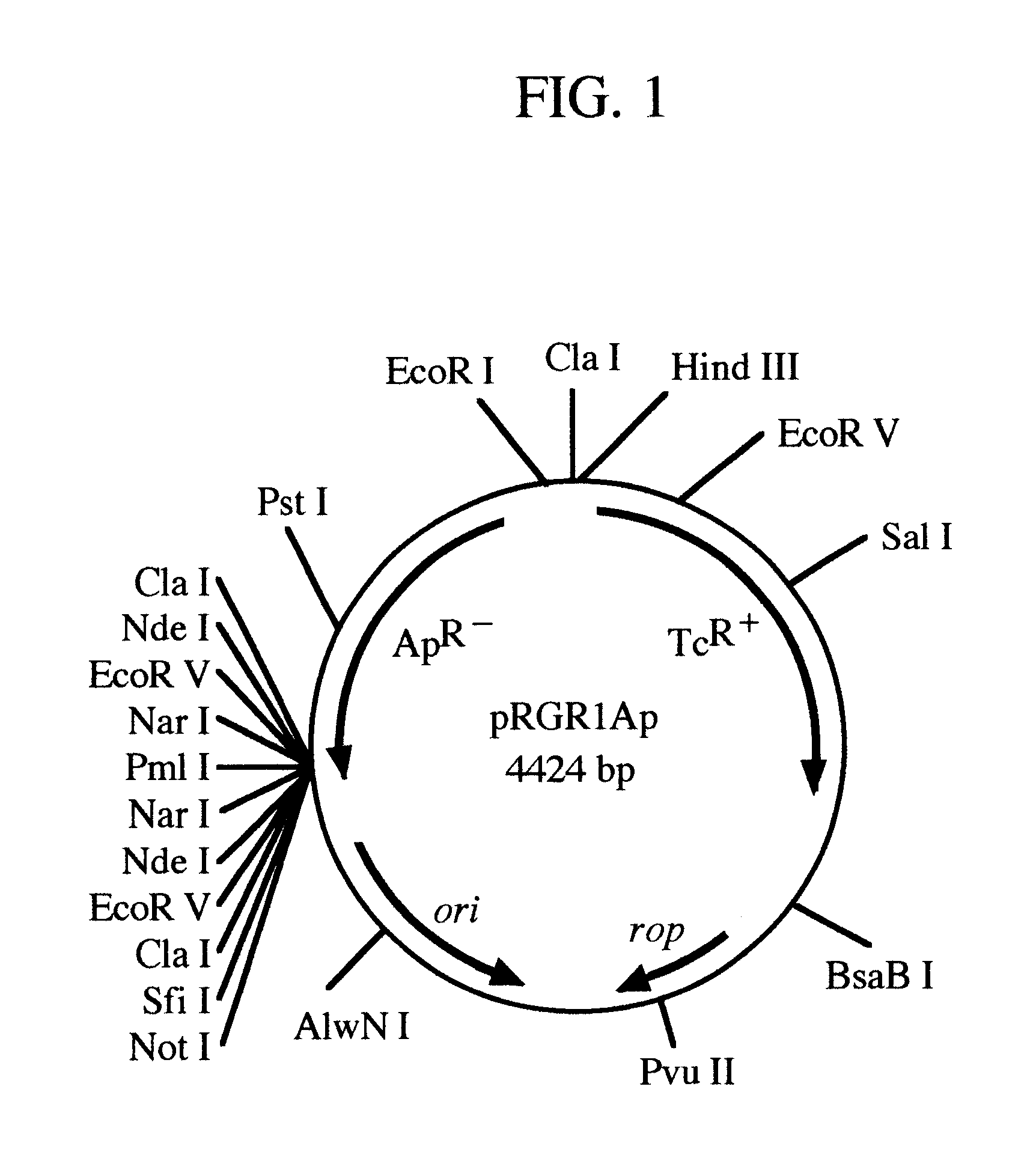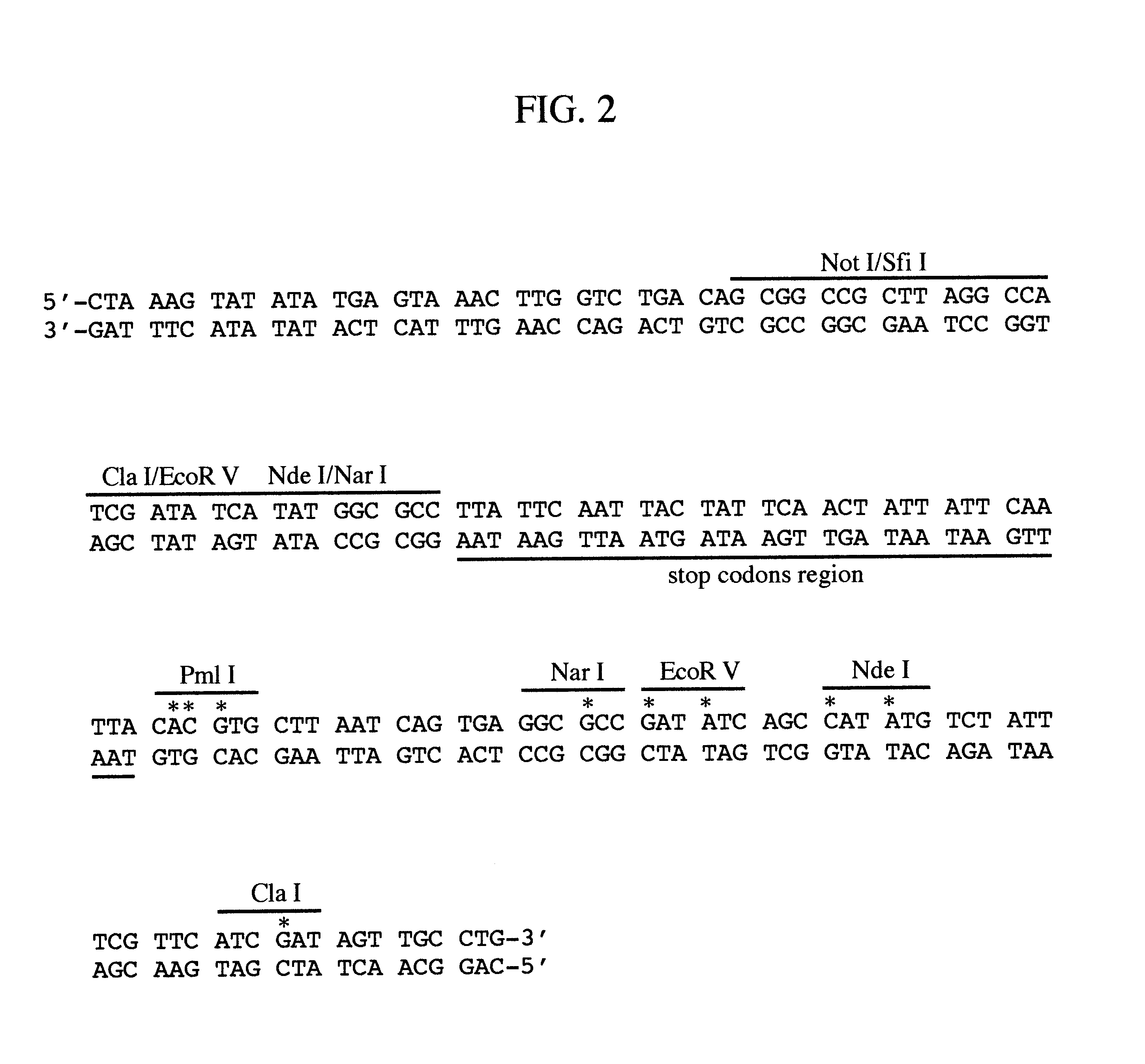pRGR: a positive selection vector system for direct cloning of PCR amplified DNA fragments
a positive selection and dna technology, applied in the field of pcr amplified dna direct cloning, can solve the problems of contamination between recombinant and non-recombinant colonies, large quantity of dna, and large quantity of dna, and achieve the effect of easy extraction of inserts
- Summary
- Abstract
- Description
- Claims
- Application Information
AI Technical Summary
Benefits of technology
Problems solved by technology
Method used
Image
Examples
example 2
Construction of pBR322.DELTA.rop1
It was decided to construct a positive selection vector with multiple added features. The vector should contain a pUC origin of replication thus giving higher copy number in E. coli compared to pRGR1Ap, which is a derivative of pBR322. The vector also should contain an M13 or f1 origin of replication to generate single-stranded form of DNA after co-infection with a helper phage phage. Furthermore, the vector should carry a phage promoter around the cloning site for easy in vitro production of RNA probes of the insert DNA.
The rop gene in pBR322 is responsible for inhibition of copy number and deletion of rop is responsible for higher copy number of pUC vectors in E. coli. Thus it was decided to delete the rop gene from pBR322 using PCR-mediated mutagenesis. The following forward PCR primer PUC681F and reverse primer PBR1380R were synthesized. The PCR product generated from pBR322 using these two primers would not contain the rop gene.
Forward primer PU...
PUM
| Property | Measurement | Unit |
|---|---|---|
| Volume | aaaaa | aaaaa |
| Volume | aaaaa | aaaaa |
| Volume | aaaaa | aaaaa |
Abstract
Description
Claims
Application Information
 Login to View More
Login to View More - R&D
- Intellectual Property
- Life Sciences
- Materials
- Tech Scout
- Unparalleled Data Quality
- Higher Quality Content
- 60% Fewer Hallucinations
Browse by: Latest US Patents, China's latest patents, Technical Efficacy Thesaurus, Application Domain, Technology Topic, Popular Technical Reports.
© 2025 PatSnap. All rights reserved.Legal|Privacy policy|Modern Slavery Act Transparency Statement|Sitemap|About US| Contact US: help@patsnap.com



